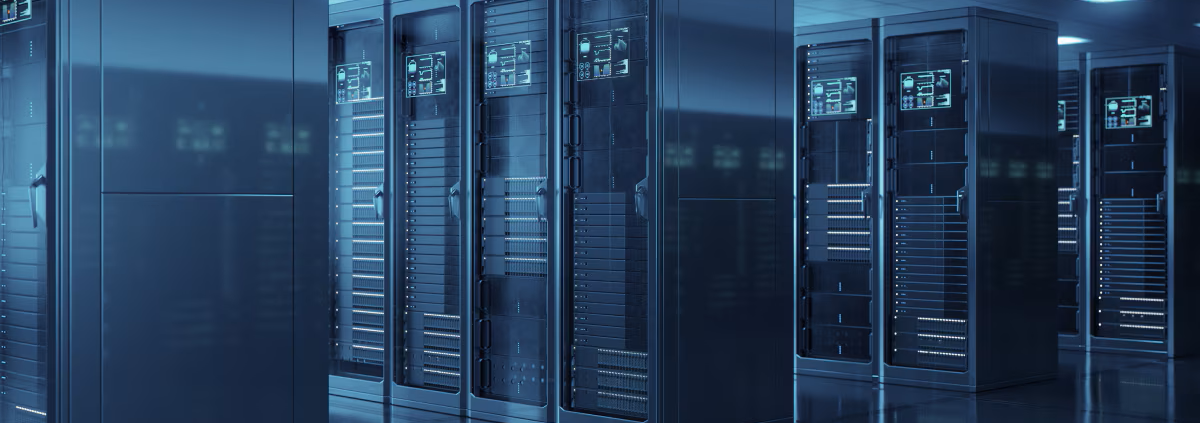Top Data Center Power Solutions: UPS, Batteries, Generators & More
Introduction: Why Power Resilience Matters More Than Ever in Data Centers
In today’s data-driven world, where uptime is critical and outages can cost thousands of dollars per minute, power infrastructure is the backbone of every successful data center. Whether supporting hyperscale cloud computing, financial transactions, or AI-powered platforms, reliable and scalable power solutions are essential for maintaining operational continuity and service-level agreements (SLAs).
But with an evolving energy landscape, including grid instability, rising energy costs, and sustainability mandates, data center operators face more challenges than ever in choosing the right power backup strategy. This article breaks down the top data center power solutions in 2025—exploring their benefits, limitations, and how to choose the right configuration for your facility.
- Core Components of Data Center Power Systems
Modern data center power systems are designed for redundancy, scalability, and seamless failover. The typical architecture includes:
- Utility Grid Power (primary supply)
- Automatic Transfer Switches (ATS)
- Uninterruptible Power Supply (UPS) Systems
- Backup Batteries (VRLA or Lithium-based)
- Standby Generators
- Power Distribution Units (PDUs)
- Remote Monitoring & Power Management Software
Each component plays a critical role in ensuring high availability and protecting sensitive IT equipment from power anomalies like sags, surges, or blackouts.
- UPS Systems: The First Line of Defense
Uninterruptible Power Supply (UPS) systems bridge the gap between utility power loss and generator startup. They offer instantaneous power protection and voltage regulation. UPS configurations typically include:
- Online (Double Conversion) UPS – Ideal for mission-critical applications
- Line-Interactive UPS – Used in edge and small data centers
- Modular UPS – Offers scalability and hot-swap capability
UPS systems are most effective when paired with reliable battery storage. And increasingly, that means considering lithium-ion over traditional VRLA batteries.
📘 For a side-by-side analysis of these battery chemistries, see our comparison guide: VRLA vs Lithium Battery for UPS: A Practical Guide for Data Center Backup Power
- Backup Batteries: VRLA vs Lithium – What’s Changing?
Historically, VRLA (valve-regulated lead-acid) batteries dominated the UPS landscape. But their weight, bulk, and limited cycle life make them less ideal for modern, high-density environments.
| Attribute | VRLA Battery | Lithium Battery (LiFePO₄) |
| Cycle Life | 200–500 cycles | 3000+ cycles |
| Maintenance | High (manual checks) | Minimal (BMS-managed) |
| Footprint | Large | Compact |
| Temperature Sensitivity | High | Moderate |
| Upfront Cost | Low | Higher (but lower TCO) |
As sustainability and total cost of ownership (TCO) come into sharper focus, lithium batteries offer clear advantages in performance, footprint, and lifecycle planning. Many modern UPS systems are now designed to be lithium-compatible from the outset.
- Standby Generators: Bridging Long Outages
While UPS systems handle short-term disruptions, generators kick in during prolonged outages. Key considerations include:
- Fuel Type – Diesel (common), natural gas (cleaner), or biogas (sustainable)
- Start Time – Typically 10–15 seconds post-outage
- Runtime – Depends on fuel tank size and refueling logistics
- Compliance – EPA Tier regulations for emissions
Generators must be tested routinely to ensure performance under load. Redundant N+1 or 2N configurations are common in Tier III and IV data centers.
- Intelligent Monitoring and Software Integration
Power solutions are no longer hardware-only. Smart monitoring systems now allow real-time tracking of:
- Battery charge/discharge cycles
- Temperature thresholds
- UPS status and fault alerts
- Generator fuel levels and run diagnostics
Integrated dashboards and API-based platforms help operators preempt failures and schedule maintenance before downtime strikes.
- Trends Shaping Data Center Power Strategies
Several key developments are influencing how operators build power resilience today:
- Shift Toward Lithium UPS Systems – Due to improved density, longevity, and smarter battery management systems (BMS)
- Microgrid Integration – Combining solar, storage, and grid-tied operations for flexibility
- Modular Power Infrastructure – Supporting edge computing and fast deployment
- AI-Enhanced Load Prediction – Optimizing generator run cycles and battery use
📘 For more on the transition to advanced UPS battery systems, read: Why Lithium UPS Battery Systems Are the Future of Data Center Backup Power
- Choosing the Right Power Solution for Your Data Center
There is no one-size-fits-all. Choosing the right setup depends on:
- Facility Tier Level (I–IV)
- Size and scalability requirements
- Energy efficiency and sustainability goals
- Budget constraints and lifecycle cost planning
- Risk profile and regional grid stability
For many enterprise and hyperscale data centers, hybrid systems combining lithium UPS, standby generators, and renewable integrations provide the best of all worlds—resilience, flexibility, and future-readiness.
Conclusion: Building Future-Proof Power Infrastructure
As data centers evolve into critical infrastructure hubs, power solutions must evolve with them. Whether you’re retrofitting an existing facility or designing from scratch, investing in scalable, intelligent, and low-maintenance power systems will ensure your operation stays ahead of both technology demands and operational risks.
To source scalable and proven lithium battery systems for data center UPS applications, connect with trusted battery suppliers usa.


